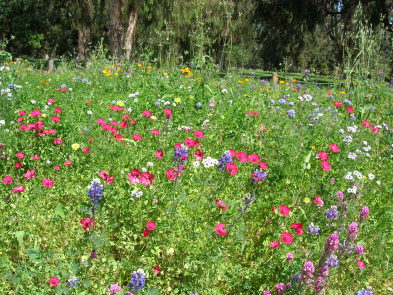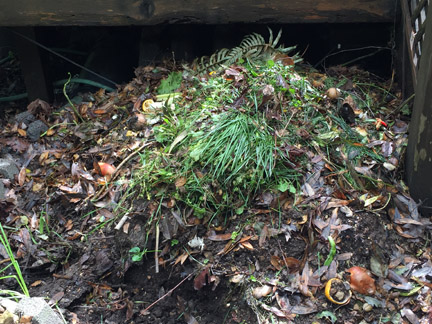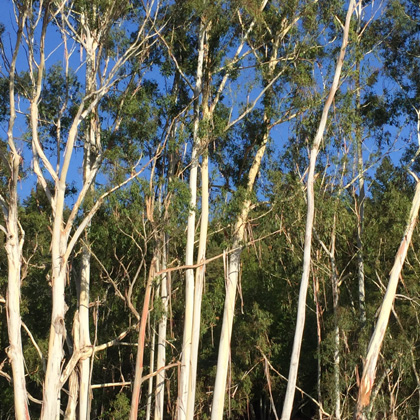 Wildflower photo © Stanford University
Wildflower photo © Stanford University


 Wildflower photo © Stanford University
Wildflower photo © Stanford University

Open Copyright Pam Walatka
If you scatter wildflower seeds at the beginning or in the middle of your rainy season, in fields, by roads, or anywhere wild grasses grow, you might help people see the beauty of the world.It is easy. It is cheap. It might work.
A couple of years ago, I scattered five different batches of seeds in five different but similar areas. Four of the batches failed to do anything. One batch worked. From that one batch, poppies have grown and re-seeded themselves every year. In sowing wildflowers, as with many efforts, the odds are against success, but the effort is worth doing for the fun of doing it. When I fling wildflower seeds into the air and onto the earth, I feel hope and joy.
Scatter the seeds wherever natural wild grasses grow: a field, a vacant lot, a hillside, beside the road. Generally, wildflowers like a sunny area. Open the container (packet/canister) and hold onto the container while flinging your arm, like tossing a Frisbee. This is not about control. This is about wildness.
To ask questions or make comments, join Facebook Lazy Compost Club
Happy Gardening!



|
The Invasiveness of Native Plant People |

|
Pam's Yoga Fitness--free online yoga |

|
Esalen in the 1960s |